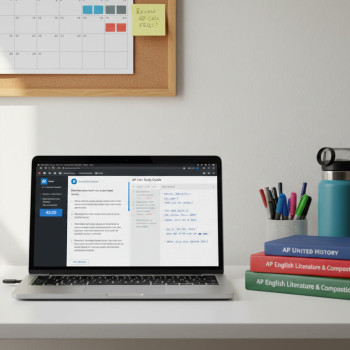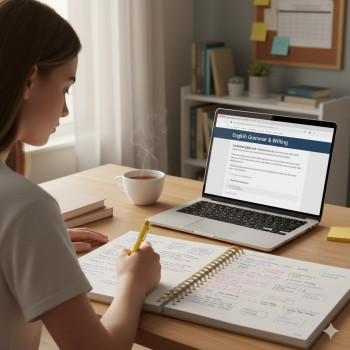Why This Conversation Matters
When the words “superscore” and “retake” come up at the kitchen table, they can trigger a surprising mix of emotions—hope, pressure, relief, and sometimes confusion. For students, a test score feels intensely personal. For parents, it’s a high-stakes data point in a bigger picture of college fit, finances, and future opportunity. Having a few clear, compassionate scripts and a practical plan can turn an awkward or stressful moment into a productive conversation that leaves everyone calm, informed, and ready to act.

Quick Essentials: What Superscoring and Retakes Mean
Before we script the conversation, let’s set a shared understanding.
- Superscoring: Some colleges combine your best section scores from different SAT test dates to create an overall “superscore.” That means you don’t have to get your best section scores on the same test day for a stronger composite score.
- Retakes: You can take the Digital SAT multiple times. Many students improve with targeted practice and good test-day strategies. The numbers that matter: colleges set their own policies—some superscore, some do not, and some are test-optional or test-blind.
- Score-sending: When you send scores to colleges, you usually send a full test from a test date; you can choose which dates to send. How colleges use those scores (including whether they superscore) depends on each college’s admissions policy.
When to Have This Talk
Timing matters. Choose a moment when everyone has mental space: after a meal, not right before school or a deadline, and ideally within the first few days after scores come out when emotions are real but not raw. Aim for curiosity, not judgment.
Good openings
- “Can we take thirty minutes to go over your SAT scores together?”
- “I’d love to understand how you felt about the test and what you want to do next.”
- “Let’s look at this like a puzzle: where are the easy gains and how much time do we have?”
Four Conversation Scripts — Tailored to Different Outcomes
Below are scripts you can adapt to your tone. Each includes a student line, a parent response, and a practical next step. Use the one that fits your situation.
1) The “This is great — keep it steady” script (when scores meet or exceed goals)
Student: “I’m happy with my scores. I hit my target for most schools I’m applying to.”
Parent: “That’s wonderful — you worked hard for this. Do you want to look at which colleges you’ll send this score to, and whether any scholarships require another test?”
Next step: Review college-specific score-use policies, finalize list of colleges to send to, and consider focusing time on essays, recommendations, or advanced classes rather than another SAT.
2) The “I did okay but want to try again” script (when improvements feel realistic)
Student: “I got a decent score, but I think I can do better in Math (or Reading).”
Parent: “That sounds promising — what part felt most off? If you’re motivated, we can map out a short plan for a retake that targets those exact areas.”
Next step: Decide on a realistic timeline for another test date, set a focused practice plan, and consider a few one-on-one tutoring sessions or a tailored study plan to accelerate improvement — personalized help like Sparkl’s 1-on-1 guidance can focus on weak areas efficiently.
3) The “I’m overwhelmed and not sure about retaking” script (when anxiety or time constraints are the issue)
Student: “I didn’t do as well as I hoped and I’m stressed. I don’t know if another attempt is worth it.”
Parent: “I hear you. Let’s not rush. We can look at how important the SAT is for the schools you’re considering—some are test-optional—and weigh the benefits of retaking versus strengthening other parts of the application.”
Next step: Investigate each college’s policy (superscoring, test-optional) and create a low-pressure timeline. If the student wants to try again but is anxious, short, focused tutoring sessions or mock digital test experiences can rebuild confidence before committing to another test date.
4) The “We need a bigger move” script (when a major score jump is required)
Student: “My current scores are much lower than I need for the schools I want.”
Parent: “Okay — that’s an important signal. Big jumps are possible, but they take a structured plan. Would you be open to a few months of focused prep with a strategy tutor and regular practice tests to track progress?”
Next step: Build a 3–6 month plan that includes diagnostic testing, weekly skill work, and full-length practice tests in the Digital SAT environment. Consider a personalized program — Sparkl’s tailored study plans and expert tutors can provide 1-on-1 guidance to make that kind of improvement more systematic.
What to Say to Counselors, Coaches, and Recommenders
When you speak with school counselors or teachers, keep it factual and future-focused. Here are short, ready-to-use lines:
- “We’re considering a retake in [month/year] with targeted work on [section].”
- “We’d like to understand how this score will impact scholarship eligibility at the colleges on my list.”
- “Can you help me interpret my score report to identify the top three skills I should focus on?”
Practical Data Table: How to Compare Options
Use this simple table to quickly compare “Do nothing / Retake once / Retake multiple times / Focus elsewhere” when deciding the next step. Replace the sample numbers with your own target and results.
| Option | Time Required | Realistic Score Gain | Impact on Application | Best For |
|---|---|---|---|---|
| Do nothing | 0 weeks | 0 points | Submit current score; focus resources on essays | Scores already meet targets |
| Retake once | 6–10 weeks of prep | +20–80 points (varies) | Potential superscore boost at receptive colleges | Small-to-moderate improvement likely |
| Retake multiple times | 3–6 months | +50–150 points (with structured plan) | Higher chances for selective schools; more data points for superscoring | Large improvement needed and time available |
| Focus elsewhere | Varies | NA | Strengthen essays, activities, GPA, and interviews | When test-optional strategy fits the profile |
How to Explain Superscoring to a Relative or Friend
Sometimes you’ll need a quick, friendly explanation for someone who isn’t involved in the admissions world. Try this:
“Superscoring means a college may look at your highest section scores from different SAT dates and combine them into one best score. So if you did better on Math in October and better on Evidence-Based Reading and Writing in December, a superscoring school could use those top section scores together.”
Real-World Example: How Superscoring Can Play Out
Meet Maya (example). She scored 680 Math / 620 Reading & Writing in October and then 640 Math / 700 Reading & Writing in December. One school that superscores combined her top section scores into a 1320 (680 Math + 700 Reading & Writing), which improved her chances for merit aid at that school. Another school didn’t superscore, so they considered each full test separately and used her highest single-date composite.
How to Ask Colleges Directly (and What to Expect)
When clarity is needed, asking admissions offices is okay. Keep it brief and respectful:
“Hi, I’m an applicant for fall [year]. Does your office superscore SAT section results? Also, do you prefer that applicants submit all SAT test dates or only the strongest dates?”
Expect a straightforward policy answer or a short pointer to the admissions website. Colleges set their policies independently, so check each school on your list.
Checklist: Before You Register for a Retake
- Review each college’s score-use policy (test-optional, test-blind, superscore).
- Identify the specific section skills you’ll improve (algebra, data analysis, reading comprehension, evidence-based writing).
- Choose a test date that leaves time for targeted prep and for scores to arrive before application deadlines.
- Decide whether to send prior scores or only your best dates (some students with many test dates prefer to send selective dates).
- Set a realistic practice plan with periodic full-length practice tests in the Digital SAT interface.
- Consider personalized tutoring if you want efficient, focused gains — targeted 1-on-1 sessions and AI-driven insights can identify your highest-leverage improvements quickly.
Study Plan Templates (Short and Long)
Two sample plans you can adapt. They assume you’ll take a digital practice environment seriously and use practice tests under timed conditions.
6-Week Sprint (for a single retake)
- Week 1: Diagnostic practice test + detailed score report review — identify 2–3 target skills.
- Weeks 2–4: Focused skill work (4 sessions/week), one full practice test every 10–14 days, review mistakes deeply.
- Week 5: Strategy refinement — pacing, question triage, and timing drills for the Digital SAT format.
- Week 6: Two full timed practice tests, light review, test-day logistics check.
3–6 Month Overhaul (for large improvement)
- Month 1: Deep diagnostic phase, set score goals, begin weekly tutoring or structured lessons.
- Months 2–4: Skill cycles (math fundamentals, advanced problem types, reading for structure and inference), monthly full practice tests, iterative review of error patterns.
- Months 5–6: Intensive test simulation, pacing mastery, and targeted drills for stubborn question types.
How Superscoring Interacts with Test-Optional Policies
Here’s the practical rule: if a college is test-optional, you can choose whether to submit scores at all. If you do submit, and the college superscores, sending multiple test dates could help. If the college is test-blind (rare), they won’t consider scores at all. Always check the current policy for each college before finalizing your sending strategy; policies evolve, and a quick check will keep you confident.
Money and Timing: What Parents Often Ask
Common questions from parents include: Does sending scores cost money? How many times can my child realistically take the SAT? Here are concise answers:
- There may be a fee to send scores beyond the free sends offered when you register, though fee waivers exist for eligible students.
- Students often take the SAT 2–4 times. Gains typically come from targeted practice, not just repetition.
- Timing should consider application deadlines—don’t take late tests that won’t report in time for admissions decisions or early-action rounds.
Words That Deflate Pressure — Use These Phrases
- “One score doesn’t define you.”
- “Let’s treat this like data that helps us make a plan.”
- “We’ll choose what’s best for your application, not what looks best to other people.”
- “Small, steady improvements are wins worth celebrating.”

When to Bring in Extra Help (and What to Look For)
If improvement stalls or time is limited, consider targeted help. Look for:
- 1-on-1 tutoring focused on your student’s specific weak areas.
- A tutor who knows the Digital SAT format and how to simulate it in practice.
- Programs that provide a tailored study plan, regular progress checks, and practice tests in a digital environment.
- Tools that use data and AI to pinpoint the highest-leverage skills to practice next.
Personalized options such as Sparkl’s tutoring approach can be especially useful because they combine expert tutors, customized study plans, and AI-driven insights to make each session efficient and results-driven. If you prefer a hands-on, measurable plan, a short series of targeted tutoring sessions can produce meaningful gains without burning out the student.
Final Conversation Script — A Calm, Collaborative Wrap-Up
Use this when you want to end the meeting with clarity and a concrete plan:
“Thanks for walking through your score with me. I’m proud of the work you put in. Here’s what I hear: [student repeats goal]. Let’s pick a plan that fits your timeline—either keep this score and move focus to applications, or schedule a retake and commit to a focused 6‑week plan. If you want help with targeted practice, we can try a few sessions with a tutor who’ll work with your exact weak spots. Which option feels right to you?”
Parting Thoughts for Students and Parents
The SAT is a tool—a quantifiable piece of the application puzzle. It can open doors, but it’s not the only thing that defines a student’s potential. The best conversations about superscoring and retakes are grounded in compassion, clarity, and strategy. Together, you can translate a score into a plan that reflects both ambition and well-being.
When in doubt, take the data, make a calm plan, and be gentle with one another. And if targeted help would reduce stress and increase efficiency, consider a short, personalized tutoring program that focuses exactly where it will move the needle most.
Ready to act?
Pick one small next step: check the colleges’ score policies, schedule a diagnostic practice test, or book a single tutoring session to see how focused, personalized guidance feels. One steady step at a time makes an entire journey manageable—and even a little exciting.

















No Comments
Leave a comment Cancel